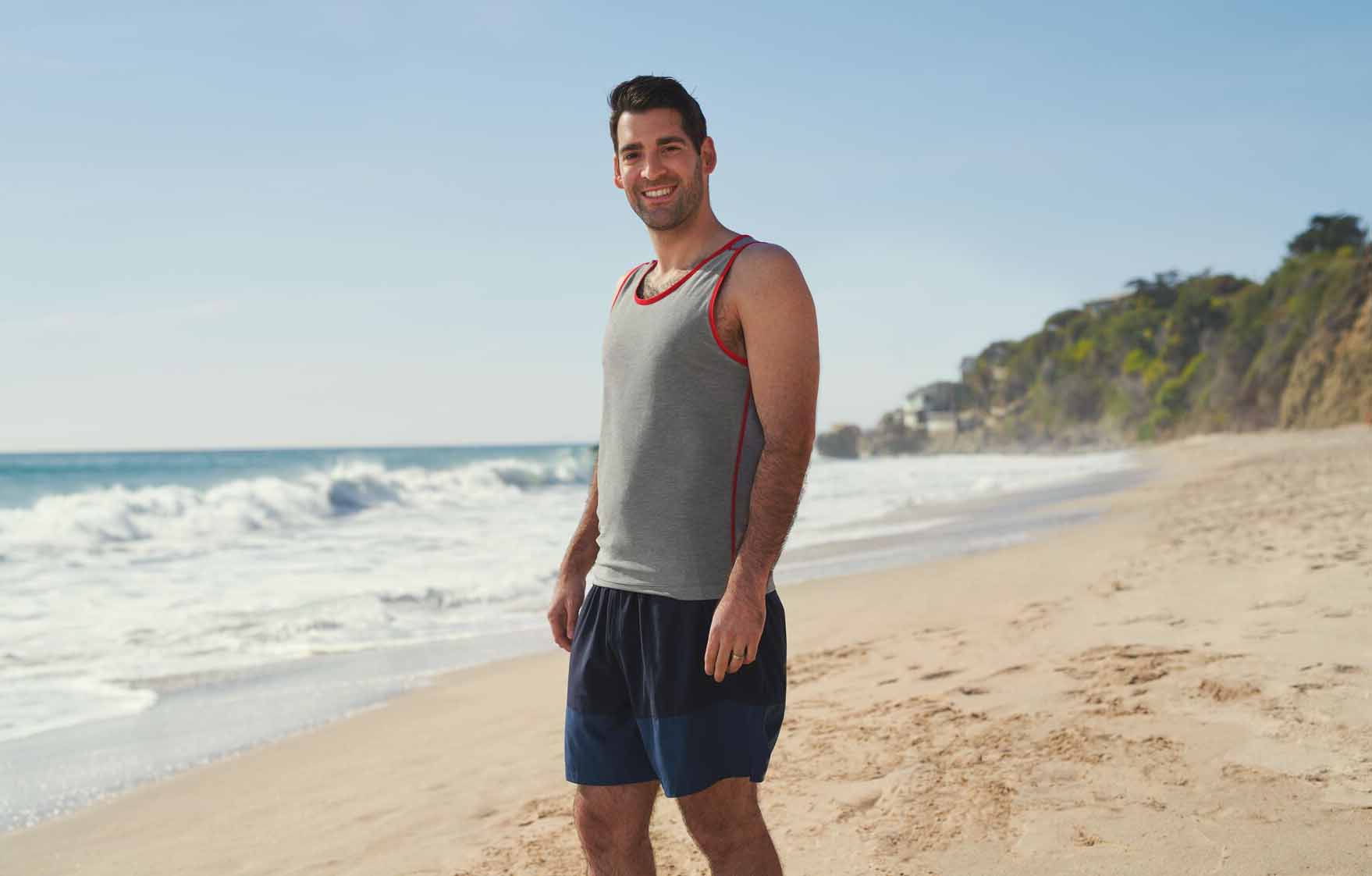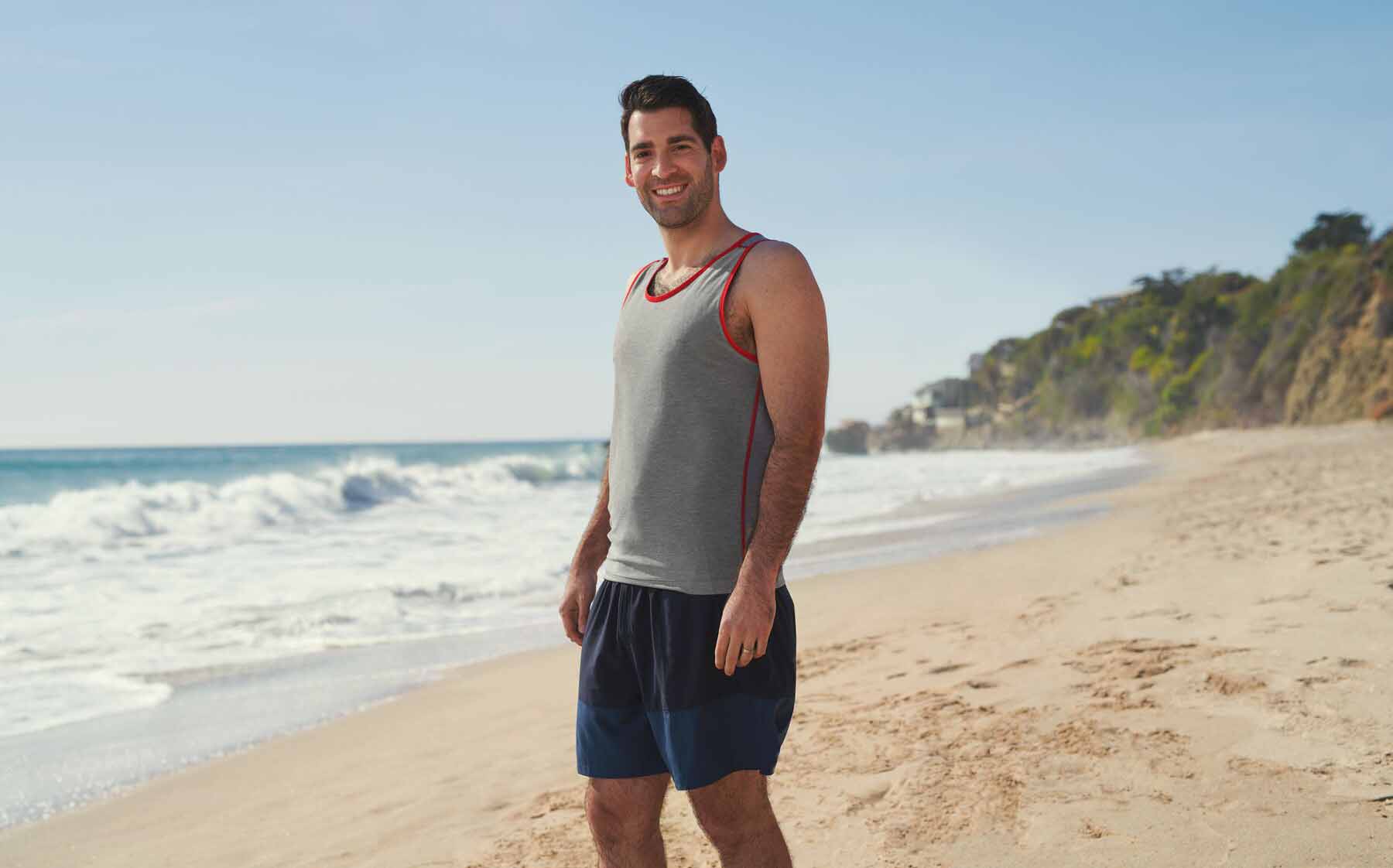Know before you go: Running on the beach


If you’re visiting a beach this summer or are lucky enough to live near the shoreline, you may have wondered how it might feel to go for a run on the beach. After all, what better setting than soft sand, ocean breezes, and a tide lapping near your feet?
Unfortunately, the reality of beach running can be a lot messier: a beating hot sun, no water fountains in sight, and legs that have turned leaden from trying to power through shifting sand. But don’t let these challenges of running in sand deter you.
By following a few simple precautions, you can turn a regular run into a next-level workout unmatched in scenery or soundtrack. Plus, you can always jump in the waves when you’re done.
Expect…
It to be challenging—even for longtime runners. “Running on sand is a huge change from pavement or the track,” notes Lisa Reichmann, a running coach and co-founder of Run Farther & Faster in Washington, D.C. “In the sand, your foot is less stable so the muscles in your lower leg (ankle and calf in particular) work harder to control your foot, which also means using more energy.” A study published in the Journal of Experimental Biology found running in sand requires 1.6 times more energy expenditure than running on a hard surface. Plan to go shorter distances and at a slower pace than your typical run.
To keep it brief. If you’re new to beach running, you may want to make it a short highlight, not the full feature. Look for a boardwalk, paved path, or sidewalk that borders the ocean, instead. You’ll get all of the views with much less of the difficulty.
Wear…
Running shoes. You’re usually barefoot on the beach so why slip on your shoes now? “Shoes offer the benefit of keeping your feet safe from hot sand, sharp shells, glass, holes, and other obstacles, plus they help provide key support for the impact of running,” says Marni Sumbal, MS, RD, CSSD, a triathlon coach based in South Carolina. That’s important because most of us simply aren’t used to jogging in our bare feet, so the muscles and tendons are unable to fully absorb the forces exerted on them with each stride, upping your risk for injury.
Where to run
Head to packed sand. Stay near the water line, where the sand is much firmer, and you’ll be rewarded with a more comfortable workout. “It may look effortless to run through sand but it can increase your risk of injury,” says Sumbal. Firmer sand can at least offer a bit more shock absorption, she adds. Although the beach is constantly changing, you’ll find the greatest amount of firm sand during low tide.
Before You Go…
Drink up. Water stops are typically few and far between when you’re running along the beach, so make sure you start your run already well hydrated. It can help to bring along water (you can find backpacks or running belts designed for this) or plant water in rest stops along the way.
Lather on the sunscreen. There’s a reason most people bring umbrellas to the beach—there’s not a ton of shade along the shore. Protect your skin by wearing a waterproof and sweatproof sunscreen, along with a hat or visor with a brim, and light-coloured, sweat-wicking clothes, advises Reichmann.
Prevent rubbing. It can help to use good anti-chafe products to prevent blisters and chafing, says Reichmann. “Apply on your feet, toes, and anywhere that chafes—for women, that especially means the sports bra line.” Products like Body Glide and Skindurance are designed to help minimize the rubbing and discomfort.
